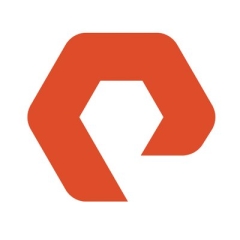It's very good storage for what we use it for, very efficient. It's very cost-effective for the amount of data we have when we're crunching the numbers that we're crunching, for our algorithms which use a lot of processing power.
The time-to-market could be better at times, but I think that's true for all vendors of hardware.
One to three years.
We've never had an issue with scale as we've deployed to some of our clients.
Depending on the deployment, the configuration, and the size of the project, and some of our larger machine-learning deployments, where we have to put in an AI-ready infrastructure box, those projects tend to take a little bit longer. It's a newer product and they're still figuring all that out. But it's comparable to any other vendor up there.
ROI depends on what the clients are looking for as the outcome. If the client doesn't know what the questions are that they need to ask in machine-learning, they can spend a lot of money and get really poor outcomes based on the data and what they're trying to get out of it. That isn't really a Pure issue, it's more a business issue in terms of the outcome wanted by the client.
Pricing is very competitive, and it's better than other competitors, as we've looked at some of the other competitors on the market. Pure, for the quality of gear we're getting versus the price, is a good value for us.
One of the "buyer beware" issues would be, if you're going to buy a $1.5 million installment of Aries, which is the NVIDIA, it's got a high cost. If you just need a cucumber cart to be pulled on wheels, you don't need to buy a jet plane, although the seller might say, "Hey, this is the best, greatest, and newest." These are some of the things that you'd want to be aware of as someone who is looking to get into AI. Make sure you need that much because you could probably build a scaled-down version at a significantly lower cost.
I rate the solution a nine out of ten. Pure is a partner of ours that we use for a lot of our machine-learning deployments and some of our smart-data applications which we build in Canada. We pursue the same clients together for some of the government contracts, and we use the FlashBlade for some of the storage for our machine-learning algorithms, with the NVIDIA DGX. We're exclusive to Pure, versus the other hardware vendors who are in the same place for flash storage. This is who we use and who we decided to go with, due to some of the innovation that they have within their stack.
In Canada, they've got a very good strategy where they're partnering with some of the good software vendors there, and they're making good relationships on the government side and with some of the VARs. They're doing a good job.
Everything is kosher with the documentation. They've been fantastic, a good partner supporting our pursuits. They have even delivered some prototypes for us, before we started using them, to some of our vendors. That way, we could have a sandbox where we could use some of their storage to create demos and proofs of concept for some of our clients.












